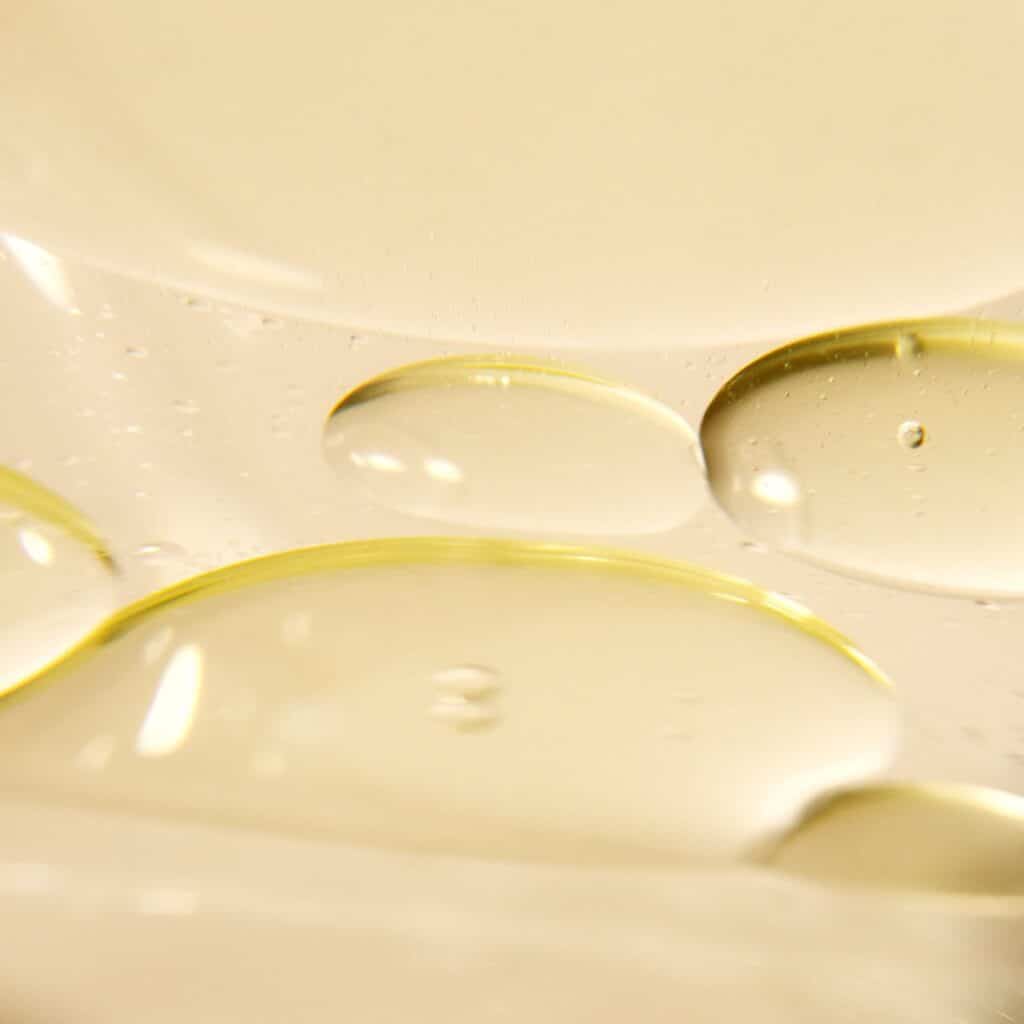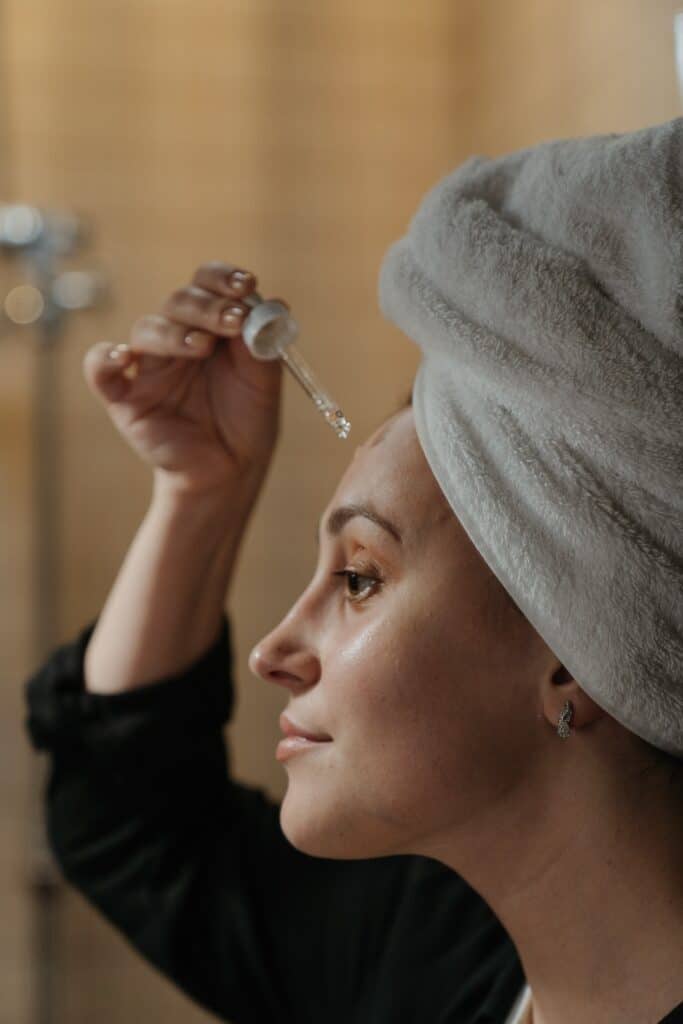If you are a person that lives in a drier climate, has dry skin, or has a damaged skin barrier, then the proper moisturizing step in your skincare routine is probably crucial to you. Water is the only ingredient that can hydrate your skin. However, various ingredients on the market can help enhance hydration. One of the most popular is hyaluronic acid. Many hydrating serums include hyaluronic acid. Hyaluronic acid is a humectant that can hold onto the water at the skin’s surface, and the proper sized hyaluronic acid can penetrate down to the dermis with water. Although hyaluronic acid is very popular polyglutamic acid has gained popularity. And some people are suggesting a polyglutamic acid serum could be an alternative to a hyaluronic acid serum.
Related Post: What Does Hyaluronic Acid Do: A Complete Guide
Hyaluronic acid is the go-to hydrating ingredient. Recently, there has been some buzz around polyglutamic acid as “the next hyaluronic acid” because it is marketed as having the ability to hold even more water than hyaluronic acid. While it is true that polyglutamic acid can hold more water than hyaluronic acid, it is not true that a polyglutamic acid serum could completely replace hyaluronic acid in your skincare routine. Let’s talk about why.
What is polyglutamic acid?
Polyglutamic acid is a polypeptide biopolymer. Peptides are proteins, and in the body, they form long chains called polypeptides. Specifically, polyglutamic acid is a long chain molecule made up of repeating units of glutamine. In the body, polypeptides have various functions, and even in skincare, peptides are gaining popularity as actives. Some recently developed peptides can penetrate the skin barrier and signal collagen production. Polyglutamic acid does not have a collagen signaling function but has other benefits.
What are polyglutamic acid’s benefits?
Polyglutamic acid is a large biopolymer that functions as a humectant. Humectants absorb and retain moisture. They are sometimes referred to as skin conditioning agents. Humectants are essential because they can keep the skin hydrated. This is beneficial because it can reduce the superficial signs of aging from dehydrated skin (fine lines and wrinkles).
Humectants can also be helpful if you have a damaged skin barrier, stratum corneum, because they will attract water and compensate for the trans-epidermal water loss (TEWL) from a damaged barrier. Some humectants like polyglutamic acid are too large to penetrate the skin. High molecular weight humectants also behave like an emollient. This means it is holding water onto the skin and conditioning it. This is the primary skincare benefit of polyglutamic acid. It will hold onto water and help condition the skin.

How is polyglutamic acid different than hyaluronic acid?
Although polyglutamic acid and hyaluronic acid have similar names, they are very different molecules. As I mentioned before, polyglutamic acid is a polypeptide, whereas hyaluronic acid is a more traditional-looking polymer with many carboxylic acid groups. Polyglutamic acid is made up of a bunch of proteins, but hyaluronic acid has a carbon backbone. While the two molecules do function similarly, they are not interchangeable. Both polyglutamic acid and hyaluronic acid are humectants. This means they both can attract and absorb water molecules. This functional similarity led people to believe that a polyglutamic acid serum could potentially replace a hyaluronic acid serum. However, the primary difference between the two molecules is their size. This size difference is why polyglutamic acid is unable to be a complete replacement for hyaluronic acid.
Polyglutamic acid is a larger molecule than hyaluronic acid. Some of the larger hyaluronic acid molecules present in hydrating serums are not as large as polyglutamic acid. As a larger molecule, polyglutamic acid can hold more water than hyaluronic acid. Sodium polyglutamate is a salt form of polyglutamic acid. It is comparable to the salt form of hyaluronic acid, sodium hyaluronate. However, it is still much larger than the salt forms of hyaluronic acid, so it cannot penetrate like the salt forms of hyaluronic acid.
Related Post: The Types of Hyaluronic Acid: Is Sodium Hyaluronate Different than Hyaluronic Acid?

When should you use a polyglutamic acid serum in your skincare routine?
After applying your actives, a polyglutamic acid serum can be an excellent addition to your skincare routine. Polyglutamic acid is a high molecular weight polymer which means after it is applied, it will sit on top of your skin. Although it is a humectant and can attract water, it is too large to travel beneath the stratum corneum so that it will form a hydrated film, hydrogel, on top of your skin. This hydrogel-like film could inhibit your actives’ ability to contact your skin. So it should be applied after actives but before oil-based steps like squalane. Additionally, it is good to use a toner or a splash of water after the polyglutamic acid serum to provide water molecules for the polyglutamic acid to hold onto and hydrate your skin throughout the day.
If you are experiencing barrier damage, incorporating a polyglutamic acid serum into your skincare routine can also be a good idea. Skin barrier damage can manifest itself as tight, dry skin. The dryness occurs because the ceramides and keratinocytes that make up your skin barrier are damaged and have defects in them. These defects allow water to escape from the lower layer of the skin, the dermis. This process is referred to as transepidermal water loss (TEWL).
At night, barrier creams with impermeable occlusives are a tool to prevent TEWL. Occlusives can help protect the skin while your barrier heals. However, wearing an occlusive for an extended time can clog pores and cause additional issues. For daytime wear, a polyglutamic acid is an excellent option in these cases. Polyglutamic acid is not impermeable like an occlusive. Still, it does form a film that attracts water. So during the day, it can be a source of hydration for your skin without blocking your pores.

1 Comment